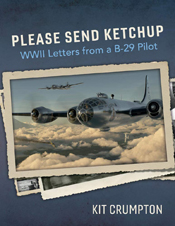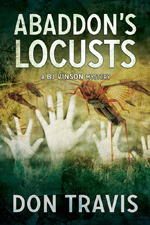Katayoun Medhat was raised in Iran and Germany, studied anthropology in Berlin and London, and worked in an adolescent psychiatric unit. For her PhD in medical anthropology, she researched mental health and alcohol rehab services on the Navajo Nation in the southwestern United States. Her first novel, The Quality of Mercy (book one in the Milagro Mystery series), was inspired by her fieldwork on the Navajo Nation and won the 2016 Leapfrog Fiction Award. Lacandon Dreams (Leapfrog Press, 2019) is her newest book and the second in the series. You’ll find Kat on her website at KatayounMedhat.com and on Facebook and Twitter.
 What is your elevator pitch for the Milagro Mystery series?
What is your elevator pitch for the Milagro Mystery series?
“The travails of Don Quixote recast in the Southwest featuring Milagro small-town cop Franz Kafka and Navajo tracker Robbie Begay” just about sums up the Milagro Mysteries. Against the backdrop of the rugged Southwest in all its natural splendor and cultural diversity, rebel with a cause (and unlikely cop) Franz Kafka aka ‘K’ confronts the demons and dragons of contemporary America—frackers, meth-pushers, gang-bangers, vigilantes—the good, the evil and the misguided. K has the help of Navajo cop and soul-brother Robbie Begay who has learned how to survive historic injustice without necessarily forgiving it and who has all the investigative skills and shrewd insight that K lacks.
“…a buddy novel, a work of history and collective and inter-generational trauma, a play with genre, from noir (…) to road movie…” is how the European Journal of Psychotherapy and Counselling reviewed The Quality of Mercy (Milagro Mystery I) and I am more than okay with that.
What would you like readers to know about the story you tell in book two, Lacandon Dreams?
An encounter with an environmental activist leads K to a quagmire of environmental destruction and corporate corruption which is tolerated—and perhaps even encouraged—by Milagro’s good ol’ boys’ network. K, still shaken by the tragic consequences of a previous case (The Quality of Mercy), finds himself once again on a solitary quest taking on the establishment, while also trying to solve the baffling disappearance of a model student. Robbie Begay, laid low after a shoot-out with meth-pushers, comes to help his old buddy K. Though Begay’s investigative methods do not always gel with K’s principles, together the odd couple uncovers a tangled web of deception leading to a ruthless vendetta involving Milagro’s upper echelons. Lacandon Dreams has some unforeseen and rather intriguing developments in store for K.
What unique challenges did this work pose for you?
This is my second book in the Milagro Mystery series, and as such the main challenge was to create a continuation between Lacandon Dreams and The Quality of Mercy without being repetitive or predictable, but also without disappointing returning readers who appreciated the particular setting, characters, and themes of the first book. Writing your first book you enjoy the privilege of innocence: everything is virgin territory (though that’s something you only appreciate, like so many things, with the benefit of hindsight).
Tell us more about Lacandon Dreams and how it came together.
Lacandon Dreams came out of a particular time. The 45th president had just come into office, and there was a lot of rhetoric that I, as a descendant of various peoples who experienced Diaspora and displacement, found very disturbing. I wanted to write something that charted the cultural diversity of the Southwest and that reflected a wide spectrum of histories and experiences. I wanted to write something that celebrated the invisible network of cultural roots that connects us all with each other. There is so much to be admired and celebrated here—and so much to be worried about too!
What sparked the story idea for the first book, The Quality of Mercy? When did you know the storyline or the choice of characters was strong enough for a series?
Fieldwork for a PhD left me with an enduring fascination with, and love of, the Southwest, in particular the Navajo Nation. I spent some time observing and volunteering in mental health services and in an alcohol and substance rehab program on the reservation where the ways in which history still casts its shadow on the present became quite obvious. Luckily the tribal ethos of community and communality is enduring and strong, as is the system of extended families and family support. The greatest thing for me was the Navajo sense of humor. Someone once told me, “Wherever you find a group of Navajo, you will hear laughing.” And this is true. During this time I heard so many stories and gained so many impressions that stimulated my imagination that trying my hand on a mystery became a tempting new challenge. Writing a PhD thesis you have to reign in and discipline your imagination. Writing fiction you are king (or queen) of that great realm in your head. It is so liberating! Once I started I found a whole new world of ideas for plots and storylines opened up. So I intend to keep on going!
 Tell us about your main characters and why readers will connect with them.
Tell us about your main characters and why readers will connect with them.
My main character is Franz Kafka aka ‘K’ who suspects that his choice to be a police officer is so far from his natural sensibilities that it makes it akin to self-harm. K is a stranger in a strange land. He has plenty of hinterland, frequently feels out of place, but he has his principles for which he will fight relentlessly. He is a natural anarchist, and being subversive is his default mode. And he has a very keen eye for the absurd. Robbie Begay is a Navajo police officer and a preternaturally adept track reader who is the Yin to K’s Yang. Begay is robustly pragmatic, not to say an outright cynic. He is very perceptive and shrewd and provides grounding to K who is more of a dreamer. Most importantly Begay has a sharp sense of humor and deep psychological insight.
Begay and K are two characters who complement each other. They have a strong friendship, though neither would care to admit to this. They prefer ribbing each other and tend to express their mutual affection mainly through sarcasm, as many men do. The tenderness is all between the lines with these two. Together they are a pretty renegade team and often act out and challenge the establishment and subvert hierarchies in ways that most of us wish we could.
Why did you choose the Southwest as the setting for the books?
The mesas, the plains, the colors, the cultures, the never-ending sky, the peoples and their languages, history, history, history…I love it! And so much here reminds me of the country of my birth—Iran.
What has been the most rewarding aspect of writing this series?
Learning to trust my characters enough to let them go where they wished to. Really, characters sometimes escape your custody and do their own thing. They will go ahead and say things you had no idea they would. I sometimes marvel at K and Begay’s wit. They say stuff I could never dream up! And they make me laugh and sometimes cry. I once heard a famous writer say that whoever claims their characters talk to them needs their head examined—so be it! To me as a writer nothing beats having characters you supposedly created surprise you.
What inspired you to become a writer?
Wanting to write was an abstract thought. I always thought I would get to it at some point when the time was ripe. People used to tell me I should be a writer. By trade I am an anthropologist and a psychoanalytic psychotherapist. These occupations involve observing, listening and (most of all) being interested in people—as does writing. One day somebody told me about NaNoWriMo (National Novel Writing Month) and I thought, “Well, I’ll try that.” That’s how the first draft of The Quality of Mercy was born—50,000 words in two weeks. Compared to the torturous tightrope that was writing my PhD thesis, writing fiction was a walk in the park! I submitted an edited version of my manuscript to Leapfrog Press’s Fiction Contest, and The Quality of Mercy was their 2016 Contest Winner.
Looking back to the beginning of your writing/publishing career, what do you know now that you wish you’d known then?
That it is pretty lucky to get a starred review in Publishers Weekly with your first published book, which in turn will get your book into public libraries throughout the country, and that is a great privilege!
Do you have a message or a theme that recurs in your writing?
The world is dark and dystopian, but it will be the small acts of kindness that will save us. I’m not sure. But that could be one message. The other one is that laughter and tears go side by side and make up life. All is bitter-sweet or sweet-bitter, but there’s no avoiding either flavor.
What writing projects are you working on now?
I am currently nearing the completion of the first draft of Milagro Mystery III. The working title is Flyover Country, though the final title may be different. I am very excited about the book. It is going to be pretty dark, I think—but these are the times we live in.
 KL Wagoner (writing as Cate Macabe) is the author of This New Mountain: a memoir of AJ Jackson, private investigator, repossessor, and grandmother. Kathy posts to a speculative fiction blog at klwagoner.com and writes about memoir at ThisNewMountain.com.
KL Wagoner (writing as Cate Macabe) is the author of This New Mountain: a memoir of AJ Jackson, private investigator, repossessor, and grandmother. Kathy posts to a speculative fiction blog at klwagoner.com and writes about memoir at ThisNewMountain.com.










 When the Heart Is Right (Lagan Press, 2019) by Parris Afton Bonds: When Washington D.C. socialite Alessandra O’Quinn is diagnosed with tuberculosis, she must leave everything she knows to seek a cure in the dry desert air of New Mexico. In her new home, Alessandra meets the local Taos Indians and shaman Manuel Mondragon. As she learns how to heal her body, she finds herself fighting to save her true self, as well as her heart. She soon joins the fight against the Bureau of Indian Affairs for the rights to Blue Lake, where the tribe believes their ancient culture was created out of the sacred waters. Set in 1920s New Mexico, this is a story of politics, male domination, racism, and love against all odds. Available on
When the Heart Is Right (Lagan Press, 2019) by Parris Afton Bonds: When Washington D.C. socialite Alessandra O’Quinn is diagnosed with tuberculosis, she must leave everything she knows to seek a cure in the dry desert air of New Mexico. In her new home, Alessandra meets the local Taos Indians and shaman Manuel Mondragon. As she learns how to heal her body, she finds herself fighting to save her true self, as well as her heart. She soon joins the fight against the Bureau of Indian Affairs for the rights to Blue Lake, where the tribe believes their ancient culture was created out of the sacred waters. Set in 1920s New Mexico, this is a story of politics, male domination, racism, and love against all odds. Available on 









